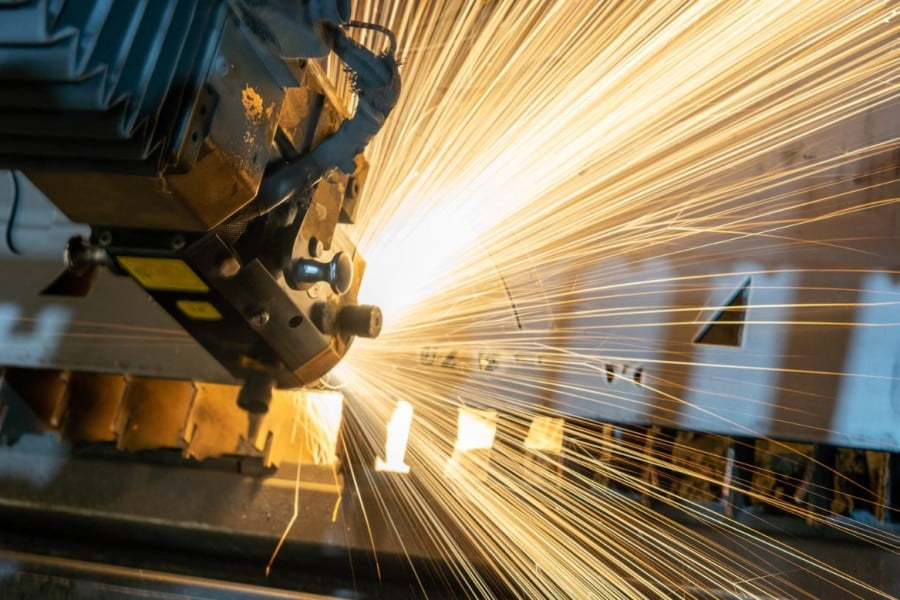By Kweku Frempong, Head of Sales for Aggreko Africa
The sub-Saharan manufacturing sector is poised on the cusp of potential. It can significantly redefine growth and economic change across the continent and provide a stable foundation from which countries can build robust economies and overcome legacy obstacles and challenges. The World Bank believes that it is one of the most significant drivers of structural transformation as a proven way of shifting countries into middle- and high-income economies. Manufacturing, says Engineering News, is considered a ‘cardinal element to realizing inclusive and sustained development’. However, the sector is struggling to achieve its objectives within a faltering economy and encroaching global recession, making it critical that foundational challenges, such as robust energy provision, are resolved sustainably.
These sentiments are echoed by the African Development Bank, with its focus on prioritizing industrialization, and by the Industrial Analytics Platform, which emphasized the value of manufacturing for employment, wealth and growth. So, to truly realize the potential of this sector and its impact on the continent it’s important to understand how energy provision is shaping the conversation.
The highly intensive energy consumption expectations of the sector make it essential for companies to move production towards more cost and energy-efficient methods. The keywords for 2023 are sustainability, environmentally aware, and reliability. There is scope for the sector to draw on alternative fuels to minimize reliance on coal and to benefit from the radical dip in the costs surrounding renewables such as solar PV systems. These roof-mounted systems not only provide a reliable source of energy but can be roof-mounted to maximize space utilization – a benefit keenly felt at facilities with limited space availability. That said, it’s equally important to invest in more sustainable solutions that are less low-hanging fruit and more long-term resolution of ongoing problems and this is where hybrid solutions come in. Integrating different energy commodities does come with some complexity though. Flexibility is key, so it is important to partner with a company with the required technical and commercial expertise to develop a tailored solution for your specific needs. It is imperative to understand the unique parameters and technical constraints to ensure that a solution is developed that balances the need for reliable power and the most affordable levelized cost of energy to support the organization in their decarbonization goals. This, coupled with an intelligent control platform allows our manufacturing clients to ensure the lights stay on, while also reducing their energy costs. It also enables them to guarantee maximum performance of different components of the hybrid solution to deliver the best outcome to the customer.
Given the highly intensive energy consumption within the sector, there is a growing demand to move towards energy methodologies and solutions that are energy and cost-efficient. There are several trends shaping how companies are approaching energy and investment within the sector and region. Each has its driving forces and complexities, and each has been affected by pricing, the pandemic and the economy in different ways. For concrete and cement, efficiency remains the key tenet of energy provision and expectations. Organizations within this sector are prioritizing a transition towards more sustainable energy provision while focusing on long-term solutions that allow them to balance green energy with reliability.
The metal production and processing industry has seen a gradual shift towards hybrid energy solutions. Companies within this sector are prioritizing independent power generation and adding renewable energy infrastructure to their operations. Like cement, the sentiments of reliability and cost optimization are key to investment and planning. Paper and pulp – one of the largest manufacturing sectors in the world – is a water-intensive sector that has a heavy reliance on energy in the production process. Manufacturers are gradually shifting towards eco-friendly paper packaging derived from recycled products and the concept of the circular economy is gaining traction. As a result, the sector is becoming increasingly reliant on lower energy intensity solutions during the production process and is continuously looking for new ways of decreasing energy consumption while promoting renewable energy use cases.
Finally, plastics and rubber are slowly proving their mettle within the market with the potential to develop into a sizeable source of economic growth and income on the continent. This sector is focused on solutions that cut energy costs while introducing sustainability and underscoring its commitment to greener energy provision and use cases.
These changing sands of industry expectations, environmental awareness and economic fragility have seen energy solutions evolve. Companies are constantly on the lookout for energy platforms and innovations that will make it easier for them to transform their energy portfolios while tightly managing costs and budgets. All companies, regardless of size or sector, need solutions that allow them to bridge the gap between traditional and legacy energy provision without unnecessary expenditure.
Aggreko has collaborated with numerous organizations across different sectors and countries to create energy solutions that align with their changing needs and unique complexities. Organizations don’t want or need a power outage that can cost them millions and seriously affect budgets, profit margins and costs. They want reliability – and Aggreko offers companies a proven bouquet of services and solutions that allow for optimized energy investment and absolute reliability.

